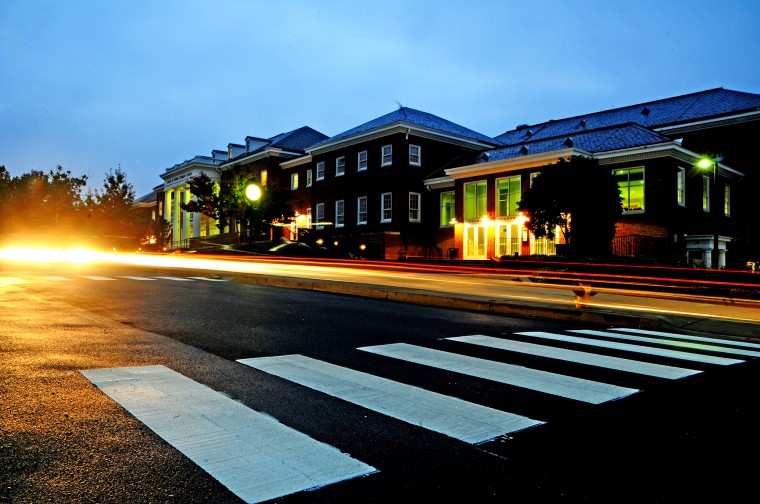
Warning signs, concrete road blocks and plastic barriers are gone from Campus Drive, and traffic is moving freely after the university reopened the street to all traffic over the weekend, following an eight-week trial closure that officials called a surprisingly successful experiment.
The university closed Campus Drive between Cole Field House and the “M” traffic circle in June — first just to private cars, then to most buses as well — to examine the feasibility of converting the space into a pedestrian plaza.
What comes next, according to Jack Baker, the university’s director of operations and maintenance, is “a month’s worth of number crunching” and analysis of the data collected during the trial.
These data — which include numbers from traffic counters, any changes in bus ridership and community feedback — will then be submitted to the Facilities Master Plan Steering Committee, whose members will spend another year determining how the concept of a “pedestrian-friendly” campus can best be implemented, he said.
Baker said he was “pleasantly surprised” by how well the trial had gone, especially in terms of traffic flow. He said while pedestrian traffic caused some backups on Regents Drive, traffic overall moved very smoothly with none of the “anticipated traffic jams.”
“My initial thought was, ‘Traffic is going to be terrible,’ and it never materialized,” Baker said.
Despite initial concerns, Washington Metropolitan Area Transit Authority spokesman Reggie Woodruff said the closure did not present a major problem for Metrobuses either. The bus lines were rerouted around Comcast Center for four weeks.
“It worked out, I guess,” Woodruff said. “If the university had decided that they needed to close that area, well, they had their reasons. So, we adjusted and tried to serve the people in that area.”
Woodruff added that WMATA will conduct an analysis to determine how much money the rerouting cost and whether ridership decreased during the trial.
Students expressed varied reactions to the trial closure of Campus Drive. Some pedestrians, such as junior business major Heather Glovinsky, said they liked having the road free of cars during the summer.
“I think it was pretty cool,” Glovinsky said. “It just makes it a lot easier to cross the street because there’s no need to look both ways first. Also, it’s just annoying having to think about whether cars will actually stop for you.”
For senior English and history major Thomas McGath, who drives to school, the reopening of Campus Drive to traffic came as a relief.
“I think it was annoying,” he said. “It just sort of split the campus in half, and there’s really no easy way to go around it.”
Baker said the university had received a tremendous amount of feedback on the closure through surveys and the Facilities Management website. Many people said the change in atmosphere on Campus Drive without all the traffic was “fantastic,” he said, but he added that there were also disapproving comments from those who could no longer take most buses up Campus Drive and were forced to walk up the hill.
The university will continue to send out surveys and collect feedback about the closure over the next few weeks, Baker said, adding that he is very grateful to those who had already taken the time to voice their opinions.
“I just really appreciate everyone’s indulgence and input during the summer,” Baker said. “It really was an interesting project.”
villanueva at umdbk dot com



